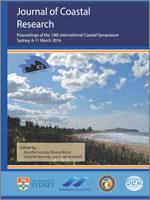Martínez, M.L.; Silva, R.; Mendoza, E.; Odériz, I., and Pérez-Maqueo, O.M., 2016. Coastal dunes and plants: an ecosystem-based alternative to reduce dune face erosion.. In: Vila-Concejo, A.; Bruce, E.; Kennedy, D.M., and McCarroll, R.J. (eds.), Proceedings of the 14th International Coastal Symposium (Sydney, Australia). Journal of Coastal Research, Special Issue, No. 75, pp. 303–307. Coconut Creek (Florida), ISSN 0749-0208.
Future scenarios indicate that growing human encroachment on coasts, more frequent and stronger storms and sea level rise will result in worsening coastal squeeze. In consequence, human lives, property and infrastructure, as well as ecosystem services, will increasingly be threatened. It is therefore vital to find the means to maintain or increase the resilience and resistance of coastal zones. As an alternative to hard infrastructure, ecosystem-based coastal defense strategies have been recommended as better and more sustainable solutions. Thus, the goal of this study was to understand the interaction of dune plants with waves, dunes and humans. We used a pantropical beach plant (Ipomoea pes-caprae).and performed 24 wave flume experiments with two beach-dune profiles, four densities of vegetation cover, and three storm regimes. We also tested tolerance to burial in seed germination and seedling growth and finally explored the impact of tourism on Ipomoea. Erosion regimes of collision and overwash were observed in the dune profiles with a berm, whereas swash and overwash regimes were observed when no berm was present. Plant cover prevented overwash and thereby erosion of the landward side of the dune. Positive responses in seeds and seedlings of Ipomoea to burial by sand enable this plant to act as a dune builder. In conditions with low tourism, Ipomoea seems to be more affected by seasonal and meteorological conditions than by trampling. These responses increase further the potential for coastal protection of Ipomoea and, thus, such an ecosystem-based protective structure can be self-sustainable.





